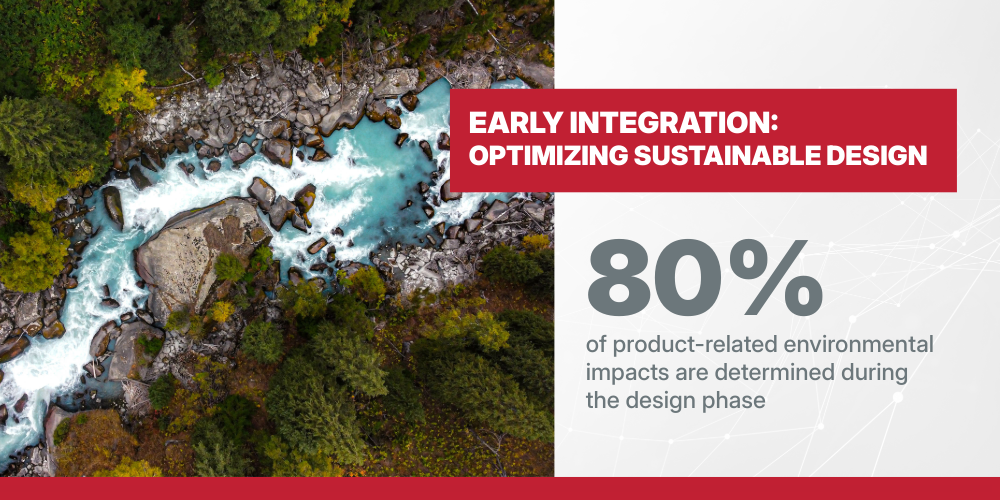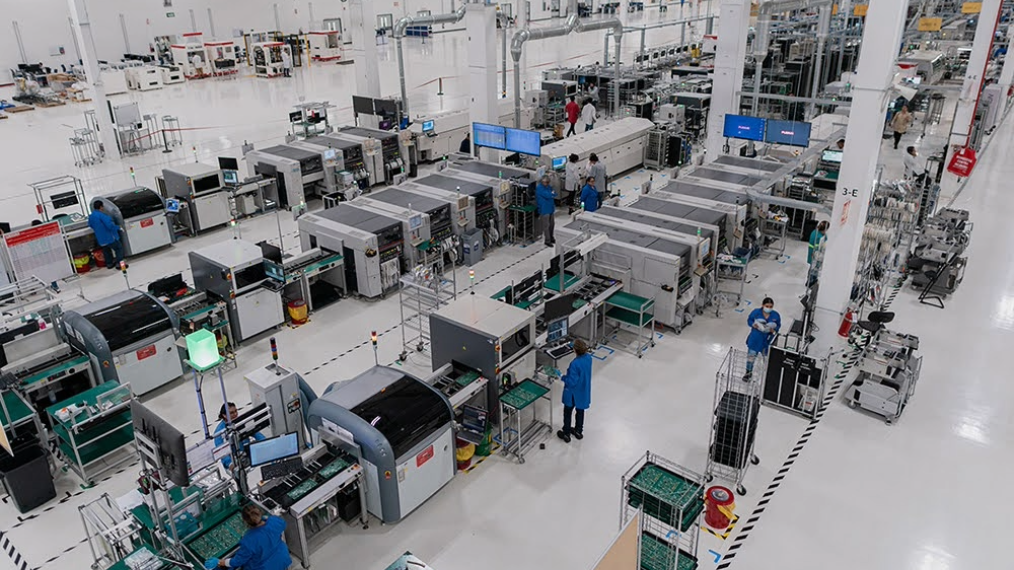Reduce Product Impact Through Sustainable Design

The global landscape for sustainable product development is undergoing a profound transformation. Driven by ambitious mandates like the European Union’s Green Deal and global Right to Repair laws, sustainable product design is becoming a non-negotiable business reality. This regulatory push is accelerating the world’s transition to a circular economy, demanding industries minimize environmental impact, as most of a product’s footprint is determined during its initial design.
To meet sustainability goals and stay competitive, companies must embed sustainability into the earliest stages of product design. This is key to succeeding in the global shift toward a circular economy.
The Imperative of Sustainable Product Design
Governments worldwide are enacting new legislation to address climate change. In the EU, the Green Deal strives to position Europe as the first climate-neutral continent. These regulations include the Eco-design for Sustainable Products Regulation (ESPR) and initiatives concerning waste, such as Packaging and Packaging Waste and Waste Electrical and Electronic Equipment Directives. Additionally, the Right to Repair Directive makes it easier and more affordable for consumers to repair defective goods by requiring manufacturers to provide timely, cost-effective repair services, spare parts, and tools. This also incentivizes manufacturers to prioritize product durability and serviceability into design upfront. Across the product lifecycle, the Green Deal is inspiring the continent’s push towards circularity.
In the US, legislation and market demands are creating powerful incentives for sustainable product design. For instance, policies like the Inflation Reduction Act (IRA) directly encourage the development of energy-efficient products and promote resilient, domestic supply chains. Additionally, a variety of state-level legislation is accelerating markets such as electric vehicles, charging infrastructure, and software and connectivity. Concurrently, the Right to Repair movement is also growing in the US, with laws passing in key states such as New York and California.
These global initiatives and regulations are influencing the industry both directly and indirectly, necessitating shifts in behaviors and processes, from supply chain management to sustainability reporting. Notably, the electronics sector contributes to 4% of global greenhouse gas (GHG) emissions. Given that the majority of the carbon footprint of a product begins in the design phase, device designers and manufacturers must make informed decisions to create a meaningful impact.
Early Integration: Optimizing Sustainable Product Design

It’s estimated that more than 80% of product-related environmental impacts are determined during the design phase, making early decisions around sustainability essential. This early integration is crucial to shift from a linear “take-make-waste” economy to a circular one where materials and resources are utilized for as long as possible. This requires a holistic, life cycle-based approach that considers a product from “cradle” (materials extraction) through production and usage, and ultimately to its “grave” (end of life). A comprehensive view helps in evaluating trade-offs, such as increased production time for items designed to be disassembled or selecting more durable components that may have a larger manufacturing footprint.
To effectively design sustainable products, it’s crucial to incorporate sustainability goals as early as possible, preferably as the initial product strategy is developed and requirements are formed. This foundational stage shapes the vision for the product and drives critical decisions about its function, form and overall impact. By embedding sustainability criteria from the outset, companies can align their product development with environmental impact objectives, reducing the need for costly redesigns later and maximizing positive impact throughout the product’s lifecycle.
Design for Environment (DFE): Principles for a Lower Impact
Design for Environment (DFE) is a set of fundamental principles that guide designers in minimizing a product’s overall impact. The guidance encompasses energy usage, material selection, serviceability and more. The core tenet of environmental management, “Prevention over Cure” or source reduction, is prioritized throughout. DFE promotes prevention of environmental impacts at the source— rather than managing them after they occur; for example, by designing out hazardous materials. These principles are rooted in the ISO guidelines provided in IEC 62430:2019 Environmentally Conscious Design Standards.
Key aspects of Design for Environment include:
- Minimizing Materials Impact & Waste: This involves the careful selection of sustainable materials, component standardization, minimizing material volume and utilizing sustainable packaging. Sustainable packaging coupled with efficient and compact designs can dramatically reduce a product’s carbon footprint and often lead to cost reductions through optimized logistics.
- Optimizing Use: Designing for energy efficiency, ensuring cybersecurity (preventing premature product obsolescence), and building reliability and durability into products to extend their lifespan are crucial for optimizing product use.
- Production Efficiency & Quality: Employing Design for Excellence (DFX) principles and robust functional testing contributes to efficient and high-quality production, which inherently reduces waste and resource consumption.
- Extending Product Life and Recovering Value: This focuses on designing for serviceability (enabling easier maintenance, repair and upgrades), facilitating part recovery and reuse, and ensuring products are easily recyclable at the end of their useful life. Designing an architecture that considers maintenance from the outset directly supports circular design, prolonging product life and enhancing end-of-life recycling.

Life Cycle Assessment: Evaluating and Improving Design
To begin understanding and mitigating a product’s environmental impact, a robust analytical tool is needed: the life cycle assessment (LCA). This analysis provides a comprehensive measurement of a product’s impact across various environmental categories throughout its defined life cycle. For instance, by focusing on the Greenhouse Gas impact category, an LCA can reveal a product’s emissions profile, guiding efforts to identify opportunities for impact reduction and build a roadmap for improvements through sustainable design.
A preliminary LCA is powerful in the early stages of design. At this nascent phase, the methodology can provide environmental impact criteria and value, enabling data-driven decision-making to evaluate trade-offs before significant resources are committed to final design and manufacturing. By establishing a baseline impact, an LCA helps identify specific trade-offs and opportunities for improvement that might otherwise be overlooked.
Life Cycle Assessment: Packaging Changes to Reduce Emissions
In a collaboration with a Healthcare customer, Plexus applied the life cycle assessment methodology early in the development phase of a novel medical device. The goal was to identify opportunities for reducing environmental impact while still meeting product specifications. An LCA provided specific insights, revealing that packaging and logistics were major contributors to the product’s carbon footprint.
By analyzing material options, optimizing the product’s dimensions for better packing density, and maximizing units per pallet, the team significantly optimized the volume of goods shipped and associated transportation emissions, all while lowering logistics expenses. These changes in packaging materials, optimized shape and size, and improved pallet utilization resulted in an estimated 70% reduction in shipping-related carbon footprint and a 35% decrease in costs. This successful application of LCA principles demonstrates how data-driven design modifications can achieve substantial, long-term environmental and economic benefits.
Let’s Connect to Design for Sustainability
Building truly sustainable products and embracing the circular economy can be a transformative step for companies in today’s dynamic regulatory landscape. Focusing on product design helps meet critical sustainability mandates while also unlocking new efficiencies, driving innovation, and enhancing brand loyalty.
To successfully integrate sustainable design and realize these benefits, collaborating with an engineering services partner like Plexus can provide a decisive advantage. We enable your teams to reduce environmental impact and optimize costs by guiding the early integration of DFE principles and leveraging life cycle assessment for data-driven decisions.
Contact Plexus
Contact Plexus today to discuss how our expertise in sustainable product development can support and accelerate your journey.


